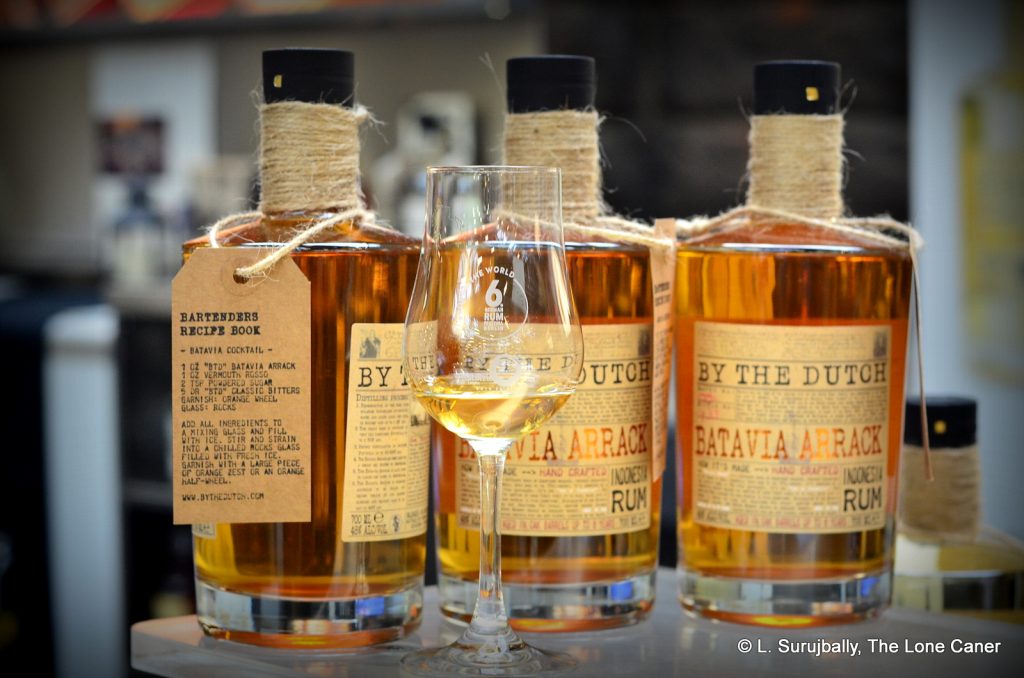
Somehow, after a big splash in 2015-2016, Indonesian rums came and left the scene with equally and almost startling suddenness. Although Haus Alpenz has been making a Batavia Arrack Van Oosten for many years (even decades, perhaps), it is a niche spirit, really, and not many know of it, and no, I haven’t tried it. My first encounter with the arracks came when I bought the Compagnie des Indes Indonesia rum in 2015 (and quite liked it), and within the year By The Dutch put this fascinating product out the door and then occasional photos began making the rounds on FB of Naga and Nusa Cana rums. Shortly thereafter Matt Pietrek wrote one of his deep dives into the By the Dutch rum, and yet after all that, somehow they have almost vanished from the popular consciousness.
Perhaps it’s the renaissance of Bajan and Jamaican rums in those same years that stole the show, I don’t know – certainly over the last years the various social media are fuller of Bajan and Jamaican rum pictures and commentaries than just about anything else. Maybe it’s physical distribution, festival absences, word of mouth, Facebook posts (or lack thereof). Whatever the case for its lack of mindshare, I suggest you give it a try, if only to see where rum can go…or where it has already been.
Part of what makes arrack interesting is the way it is fermented. Here some fermented red rice is mixed into the yeast prior to addition to the molasses and water (up to 5%), which undoubtedly impacts the final taste. I was told by a By the Dutch rep that this particular spirit derives from sugar cane juice and fermented red rice cake, and is then twice distilled: once in a pot still, producing a distillate of about 30% ABV, and then again in another pot still to around 60-65%. At that point it is laid to rest in barrels made of teak (!!) in Indonesia for a number of years and then shipped to Amsterdam (Matt implies it’s to Scheer) where it is transferred to 1000L oak vats. The final arrack is a blend of spirits aged 8 months, 3, 5 and 8 years, with the majority of the spirit being 3 and 5 years of age and bottled at 48% ABV.
A production process with so many divergent steps is sure to bring some interesting tastes to the table. It’s intriguing to say the least. The nose, even at 48%, is remarkably soft and light, with some of that pot still action being quite evident in the initial notes: rotting banana skins, apples gone off and some funky Jamaican notes, if perhaps not as intense as a Hampden or worthy Park offering. This then slowly — almost delicately — released light citrus, watery fruit and caramel hints, chamomile, cinnamon, green tea and bitter chocolate and a sort of easy sweetness very pleasing to smell.
It got better when I tasted it, because the strength came out more clearly – not aggressive, just very solid and crisp at the same time, sweet and clear, almost like an agricole with some oak thrown in for good measure. The pot still origins were distinct, and taste of sweet fruits gone over to the dark side were handled well: apples, citrus, pears, gherkins, the very lightest hint of olives, more tea, green grapes, with cooking spices dancing around everything, mostly nutmeg and cinnamon. Even the finish was quite aromatic, lots of esters, bananas, apples, cider and a sort of grassiness that was more hinted at than forcefully explored.
As an alternative to more commonly available rums, this one interesting. It doesn’t smack you in the face or try to damage your glottis – it’s too easy or that – and works well as both a sipping drink (if your tastes go that way), or something to chuck into a mai-tai or a negroni variation. One of the reasons why it should be tried and appreciated is because while it has tastes that suggest a Jamaican-Bajan hybrid, there is just enough difference from the mainstream here to make it a fascinating drink on its own merits, and shows again how rum is simply the most versatile, varied spirit available.
Plus, let’s be fair, the arrack is quite a nifty rum judged solely by itself: no, it’s not a stern and forbiddingly solid cask-strength rum, no – it’s actually something of the other way… but it’s original within its limits, sweet enough for those who like that, edgy enough for those who want more. In short, eminently sippable for its strength. I think it’s an old, even ancient drink made new, and even if one does not immediately succumb to its languorous charms, I do believe it’s worth taking out for a try.
(#521)(84/100)
Other notes
The bottle clearly says “aged up to 8 years”. Understand what this means before you think you’re buying an 8 Year Old rum.
Opinion
With respect to the rum news all being about the western hemisphere’s juice: I don’t begrudge the French, Spanish or English Caribbean rum makers their glory — that would be deeply unpatriotic of me, even if one discounted the great stuff the islanders are making, neither of which is an option. There’s a reason they get just about 75% of the press, with the independents and Americans (north and south) getting the remainder.
But I just want to sound a note of caution about the blinkers such focus is imposing on our rumsight, because by concentrating on nothing but these, we’re losing sight of great stuff being made elsewhere – on the French islands, St Lucia, Grenada, Mexico, Japan…and Indonesia. From companies like By the Dutch and the New Asians only now beginning to be more visible.

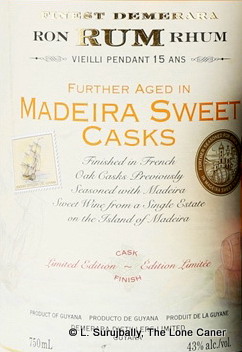 Nose – Leaving aside a slight sweetish note (which I suppose is to be expected, though still not entirely welcome), it noses relatively darker and richer and fruitier than just about all the others except the “Dry”…within the limits of its strength and mild adulteration. Peaches, raisins, cinnamon, cloves, caramel, peanut butter, cherries in syrup and candied oranges, even a little bitter chocolate. It’s all rather delicate, but quite pleasant.
Nose – Leaving aside a slight sweetish note (which I suppose is to be expected, though still not entirely welcome), it noses relatively darker and richer and fruitier than just about all the others except the “Dry”…within the limits of its strength and mild adulteration. Peaches, raisins, cinnamon, cloves, caramel, peanut butter, cherries in syrup and candied oranges, even a little bitter chocolate. It’s all rather delicate, but quite pleasant.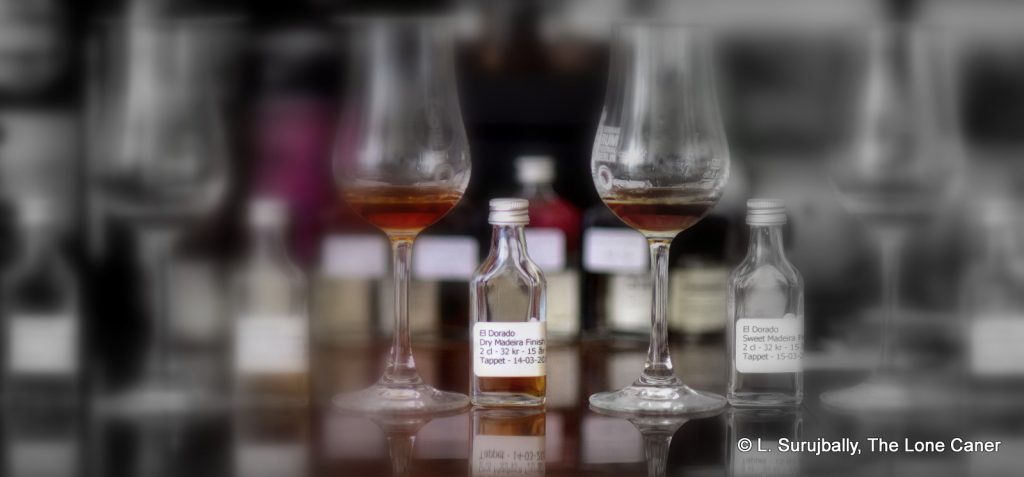
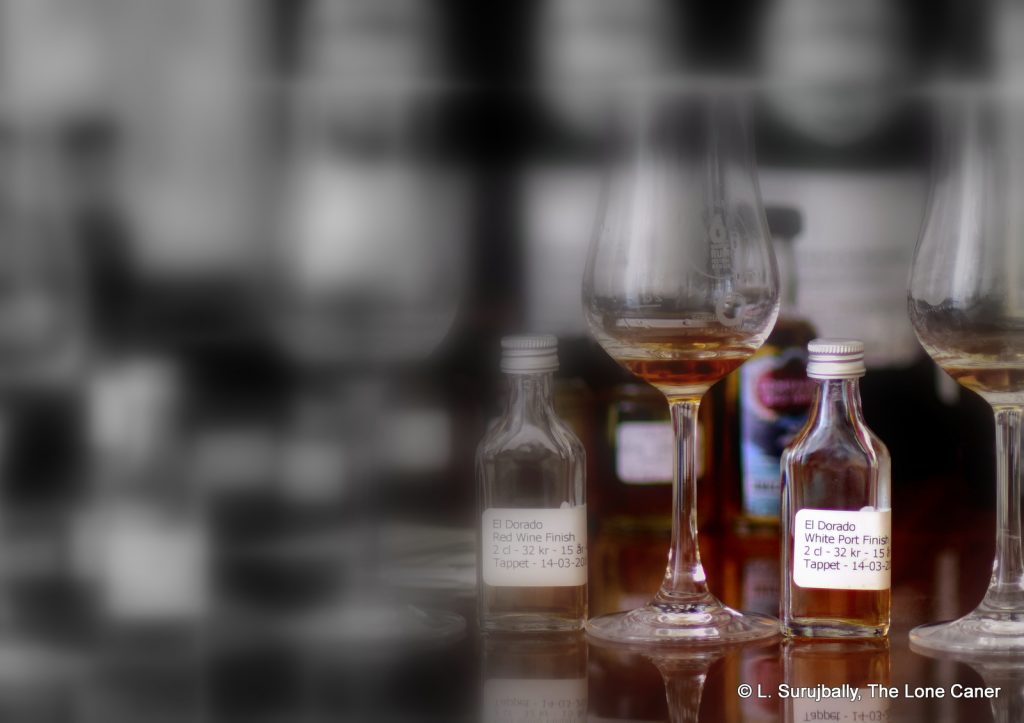
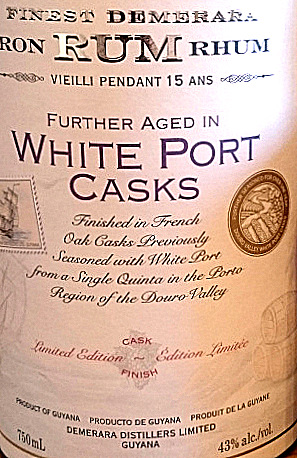 Nose – At first there didn’t seem to be much of anything there, it was so mild as to be lightly flavoured alcohol. But after some minutes it got into gear and revved up some, with a solid core of light brown sugar, molasses, salt caramel, some sweet soya. Not much deep fruitiness here, just light grapefruit, bananas and nuttiness, and sweet white chocolate.
Nose – At first there didn’t seem to be much of anything there, it was so mild as to be lightly flavoured alcohol. But after some minutes it got into gear and revved up some, with a solid core of light brown sugar, molasses, salt caramel, some sweet soya. Not much deep fruitiness here, just light grapefruit, bananas and nuttiness, and sweet white chocolate.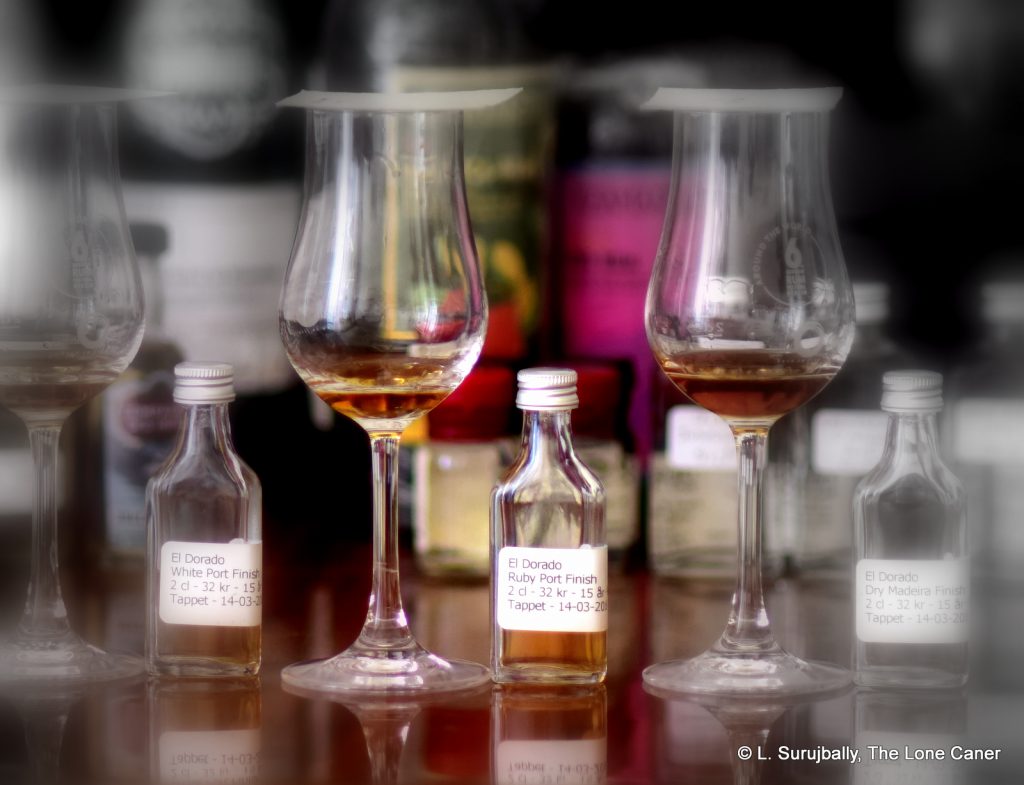
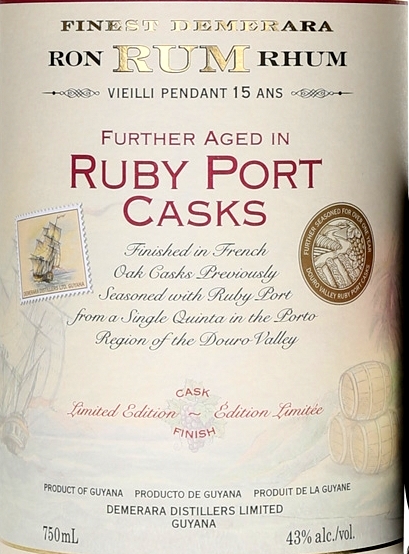 Nose – This has a light, sweet, almost delicate series of smells. There are acetones, flowers and some faint medicinal, varnish and glue aromas floating around (I liked those – they added something different), and initially the rum noses as surprisingly dry (another point I enjoyed). These then morph gradually into a more fruity melange – tinned cherries in syrup, ripe pears, pineapples, watermelons – while remaining quite crisp. It also hinted at salted caramel, crunchy peanut butter, breakfast spices and a little brine, and the balance among all these seemingly competing elements is handled really well.
Nose – This has a light, sweet, almost delicate series of smells. There are acetones, flowers and some faint medicinal, varnish and glue aromas floating around (I liked those – they added something different), and initially the rum noses as surprisingly dry (another point I enjoyed). These then morph gradually into a more fruity melange – tinned cherries in syrup, ripe pears, pineapples, watermelons – while remaining quite crisp. It also hinted at salted caramel, crunchy peanut butter, breakfast spices and a little brine, and the balance among all these seemingly competing elements is handled really well.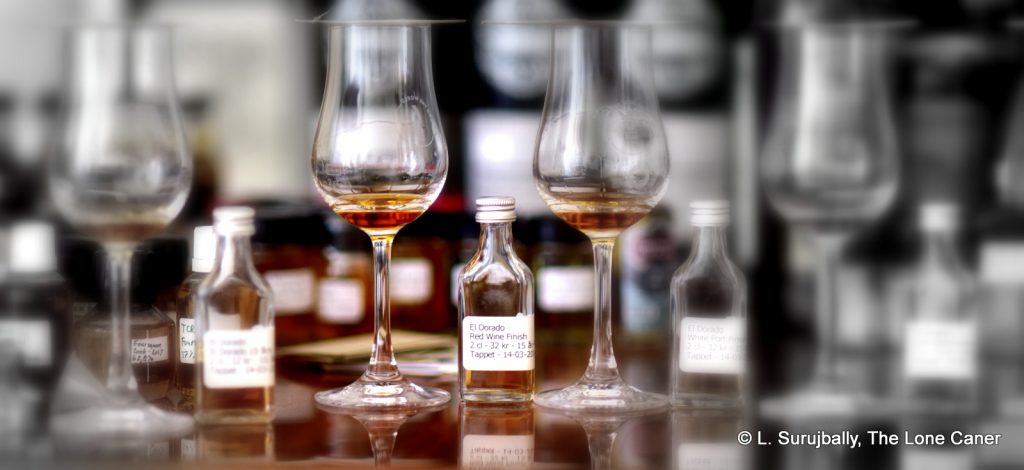
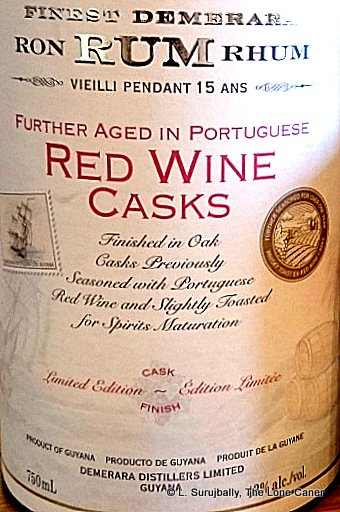 Nose – Somewhat dry and redolent of sawdust, accompanied by delicate flowers an acetones. Quite solid and lightly sweet, and deserves to be left to stand for a while, because after some minutes the molasses, caramel and light licorice notes characteristic of the line begin to make themselves felt, and are then in their turn dethroned by a deep fruitiness of ripe cherries, blackcurrants, plums, raisins and black grapes almost ready to spoil. In the background there’s some leather and citrus, neither strong enough to make any kind of serious impression.
Nose – Somewhat dry and redolent of sawdust, accompanied by delicate flowers an acetones. Quite solid and lightly sweet, and deserves to be left to stand for a while, because after some minutes the molasses, caramel and light licorice notes characteristic of the line begin to make themselves felt, and are then in their turn dethroned by a deep fruitiness of ripe cherries, blackcurrants, plums, raisins and black grapes almost ready to spoil. In the background there’s some leather and citrus, neither strong enough to make any kind of serious impression.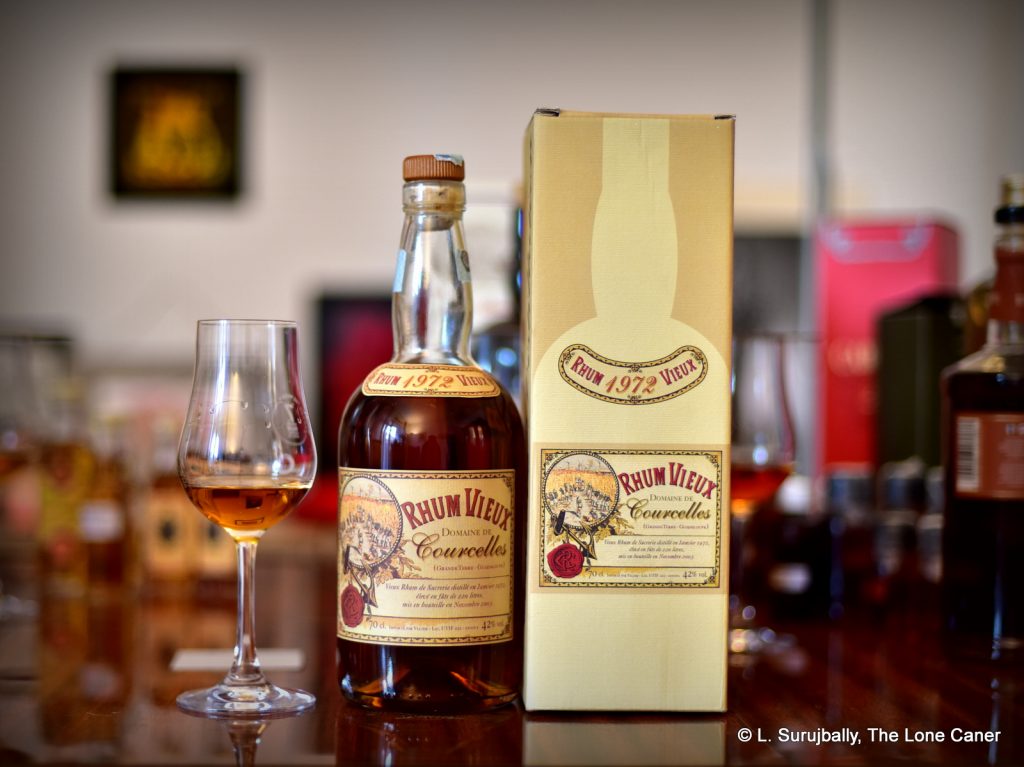
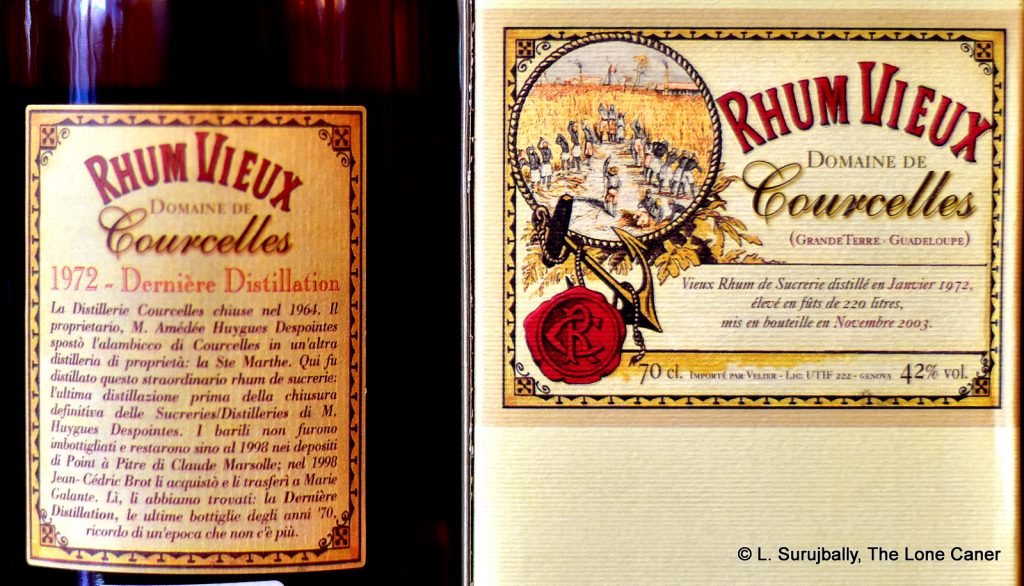
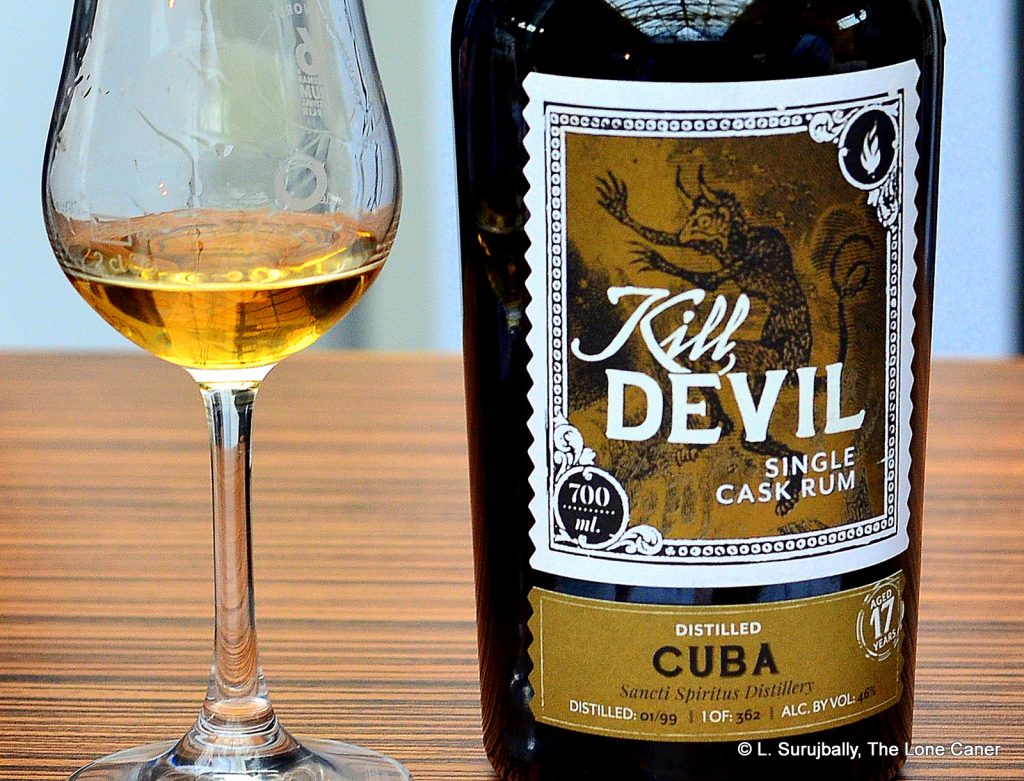

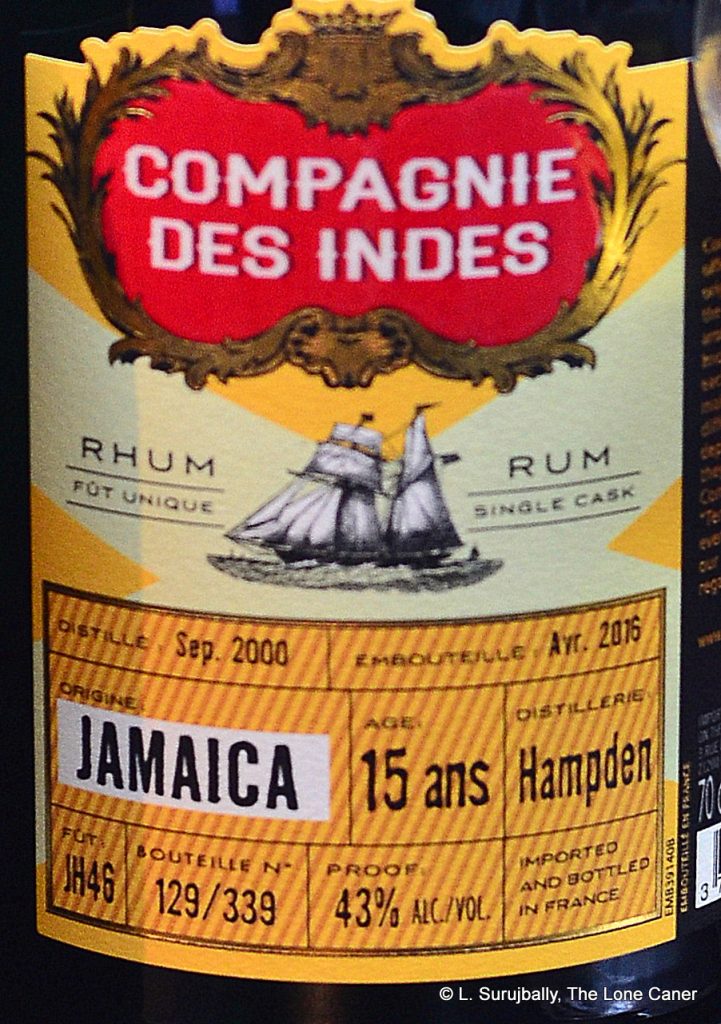 On the palate, I didn’t think it could quite beat out the CdI Worthy Park (which was half its age, though quite a bit stronger); but it definitely had more force and more uniqueness in the way it developed than the Longpond and the Mezans. It started with cherries, going-off bananas mixed with a delicious citrus backbone, not too excessive. After ten minutes or so it opened further into a medium sweet set of fruits (peaches, pears, apples), and showed notes of oak, cinnamon, some brininess, green grapes, all backed up by delicate florals that were very aromatic and provided a good background for the finish. That in turn glided along to a relatively serene, slightly heated medium-long stop with just a few bounces on the road to its eventual disappearance, though with little more than what the palate had already demonstrated. Fruitiness and some citrus and cinnamon was about it.
On the palate, I didn’t think it could quite beat out the CdI Worthy Park (which was half its age, though quite a bit stronger); but it definitely had more force and more uniqueness in the way it developed than the Longpond and the Mezans. It started with cherries, going-off bananas mixed with a delicious citrus backbone, not too excessive. After ten minutes or so it opened further into a medium sweet set of fruits (peaches, pears, apples), and showed notes of oak, cinnamon, some brininess, green grapes, all backed up by delicate florals that were very aromatic and provided a good background for the finish. That in turn glided along to a relatively serene, slightly heated medium-long stop with just a few bounces on the road to its eventual disappearance, though with little more than what the palate had already demonstrated. Fruitiness and some citrus and cinnamon was about it.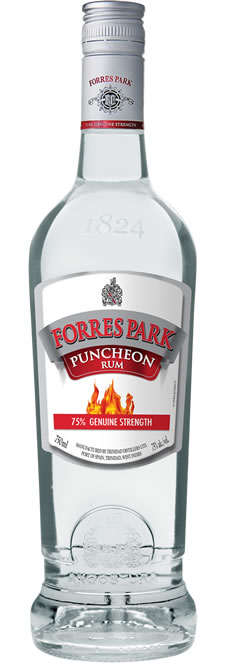


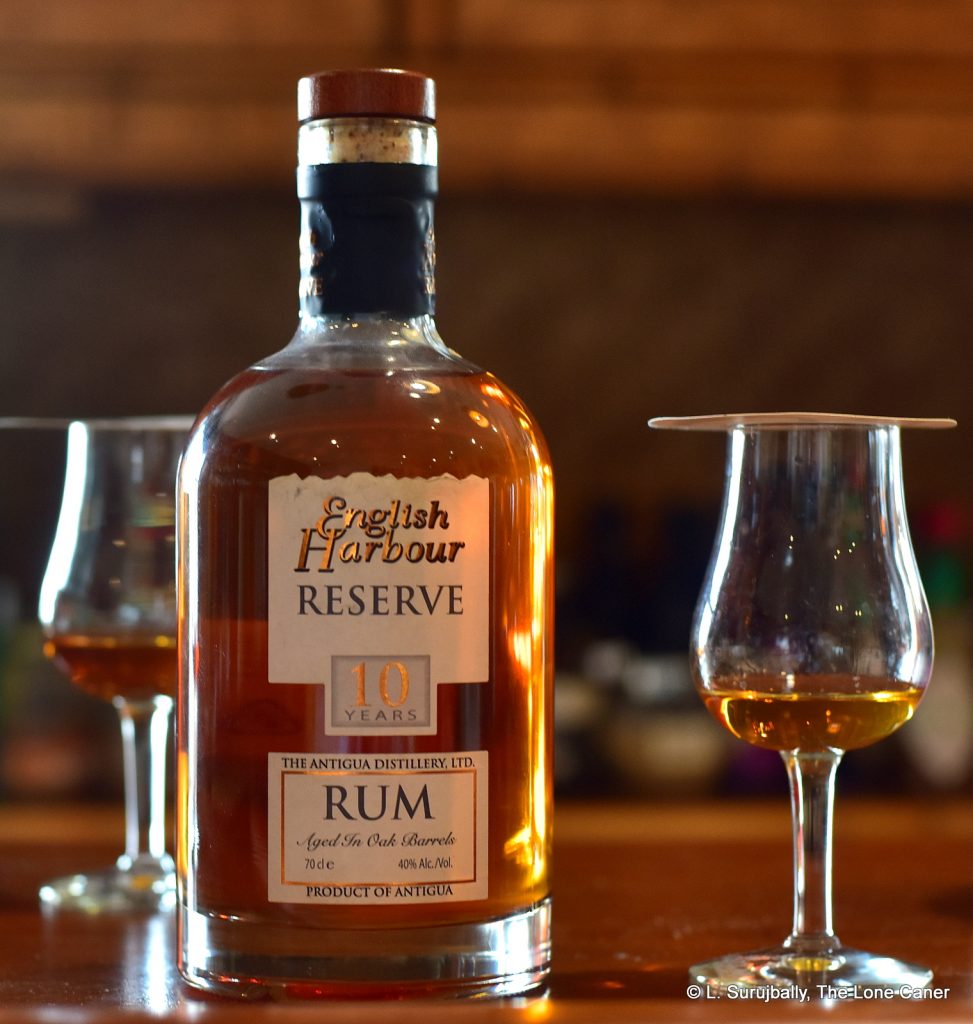
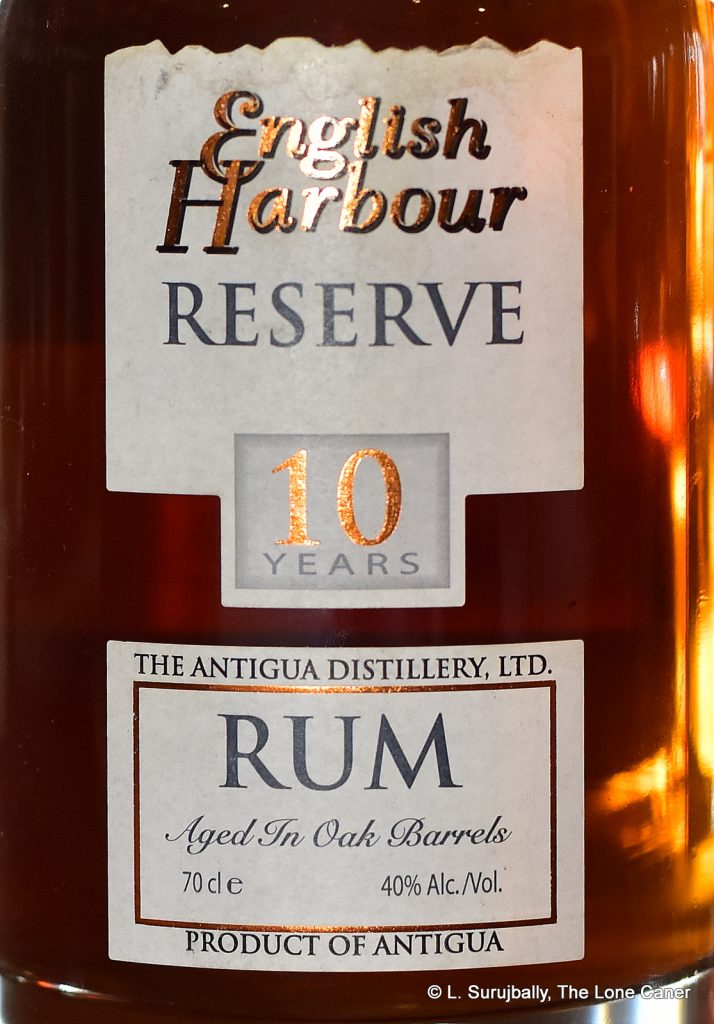 The nose begins with an astringent sort of dryness, redolent of burnt wood chips, pencil shavings, light rubber, citrus and even some pine aroma. It does get better once it’s left to itself for a while, calms down and isn’t quite as aggressive. It does pack more of a punch than the 25 YO, however, which may be a function of the disparity in ages – not all the edges of youth had yet been shaved away. Additional aromas of bitter chocolate, toffee, almonds and cinnamon start to come out, some fruitiness and vanilla, and even some tobacco leaves. Pretty nice, but some patience is required to appreciate it, I’d say.
The nose begins with an astringent sort of dryness, redolent of burnt wood chips, pencil shavings, light rubber, citrus and even some pine aroma. It does get better once it’s left to itself for a while, calms down and isn’t quite as aggressive. It does pack more of a punch than the 25 YO, however, which may be a function of the disparity in ages – not all the edges of youth had yet been shaved away. Additional aromas of bitter chocolate, toffee, almonds and cinnamon start to come out, some fruitiness and vanilla, and even some tobacco leaves. Pretty nice, but some patience is required to appreciate it, I’d say.
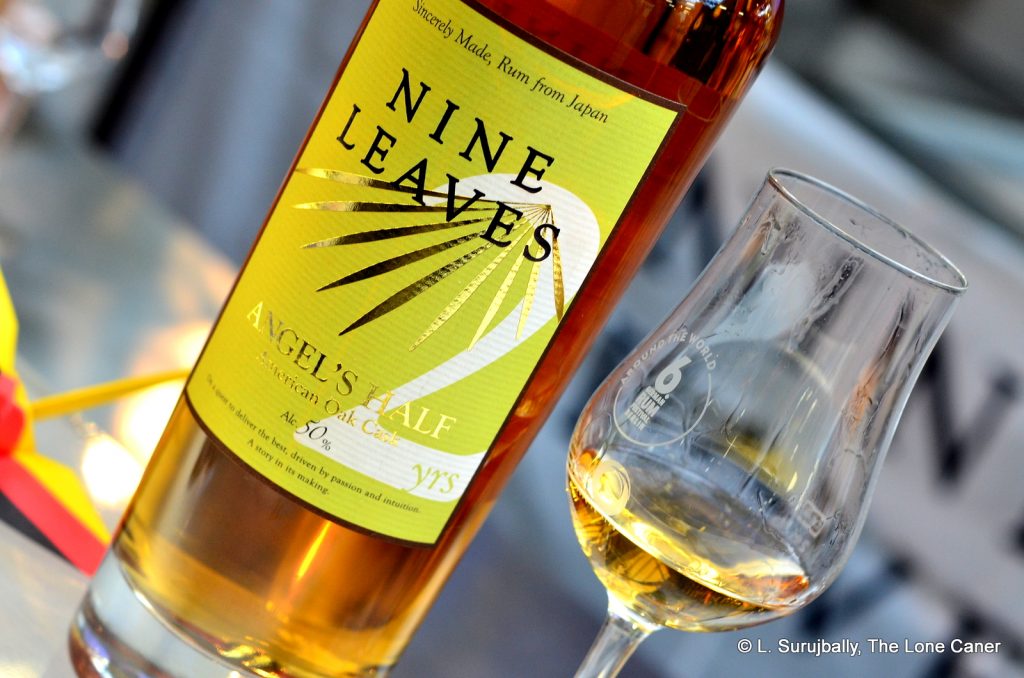
 The nose rather interestingly presented hints of a funky kind of fruitiness at the beginning (like a low rent Jamaican, perhaps), while the characteristic clarity and crisp individualism of the aromas such as the other Nine Leaves rums possessed, remained. It was musky and sweet, had some zesty citrus notes, fresh apples, pears and overall had a pleasing clarity about it. Plus there were baking spices as well – nutmeg and cumin and those rounded out the profile quite well.
The nose rather interestingly presented hints of a funky kind of fruitiness at the beginning (like a low rent Jamaican, perhaps), while the characteristic clarity and crisp individualism of the aromas such as the other Nine Leaves rums possessed, remained. It was musky and sweet, had some zesty citrus notes, fresh apples, pears and overall had a pleasing clarity about it. Plus there were baking spices as well – nutmeg and cumin and those rounded out the profile quite well.

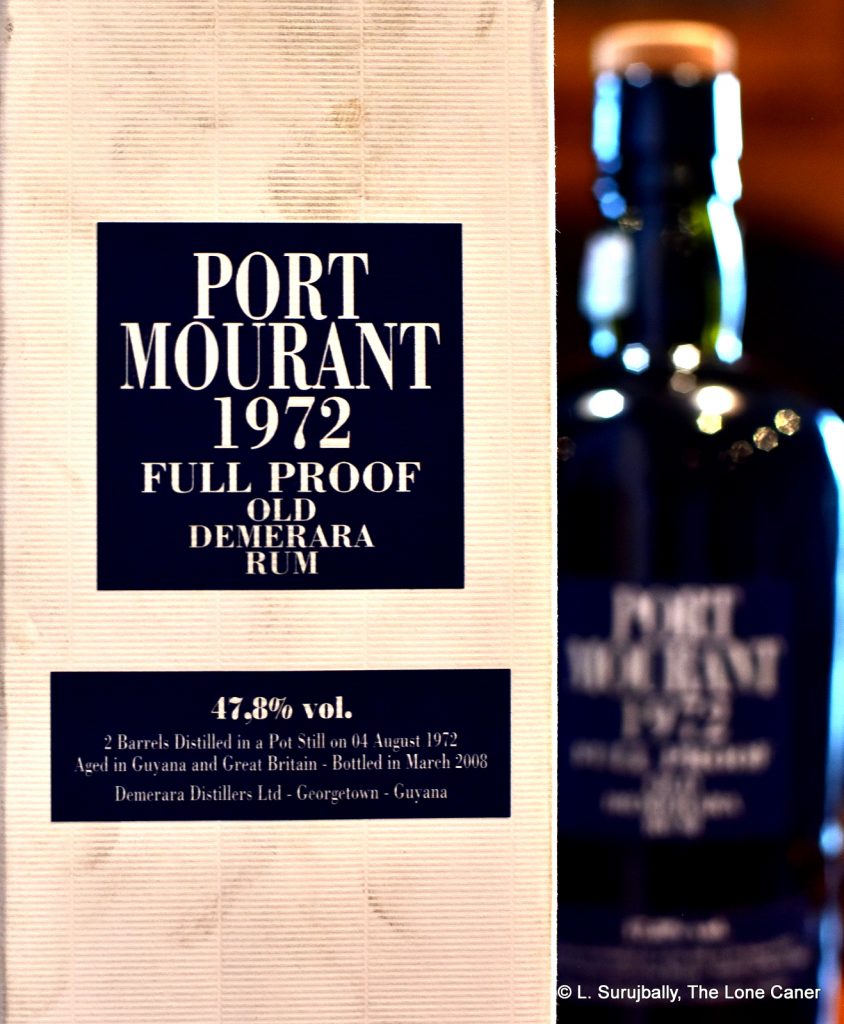 The nose made an immediate and emphatic response: “Here’s how.” I had exasperatedly grumbled
The nose made an immediate and emphatic response: “Here’s how.” I had exasperatedly grumbled 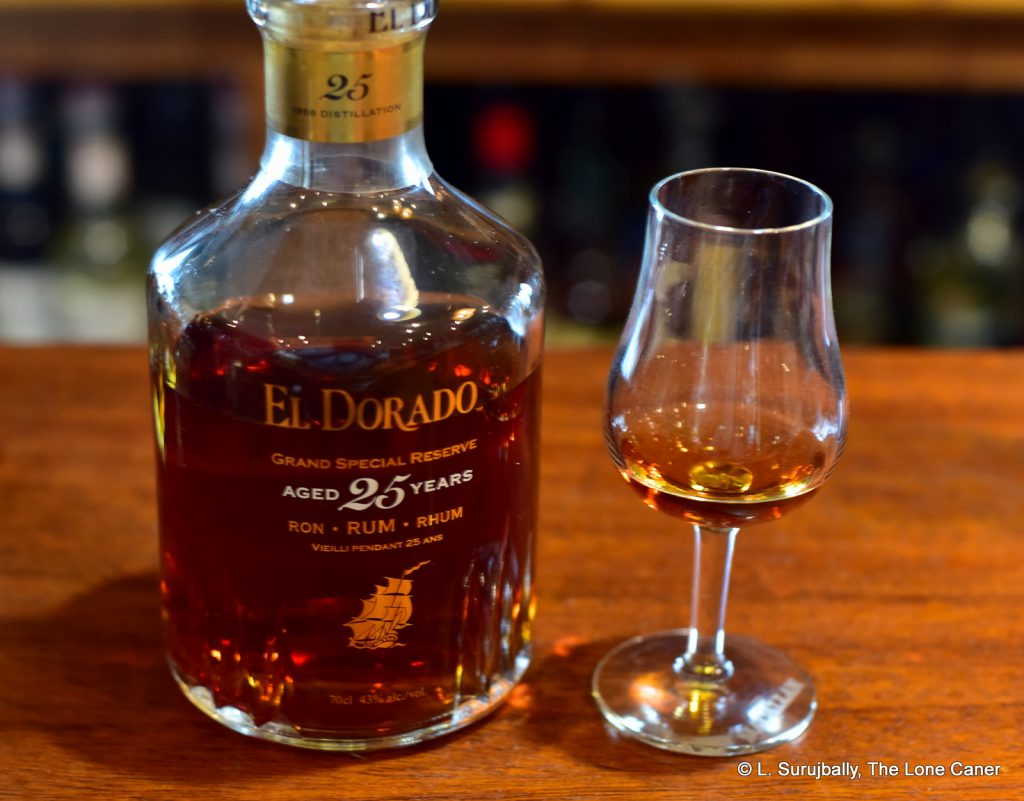
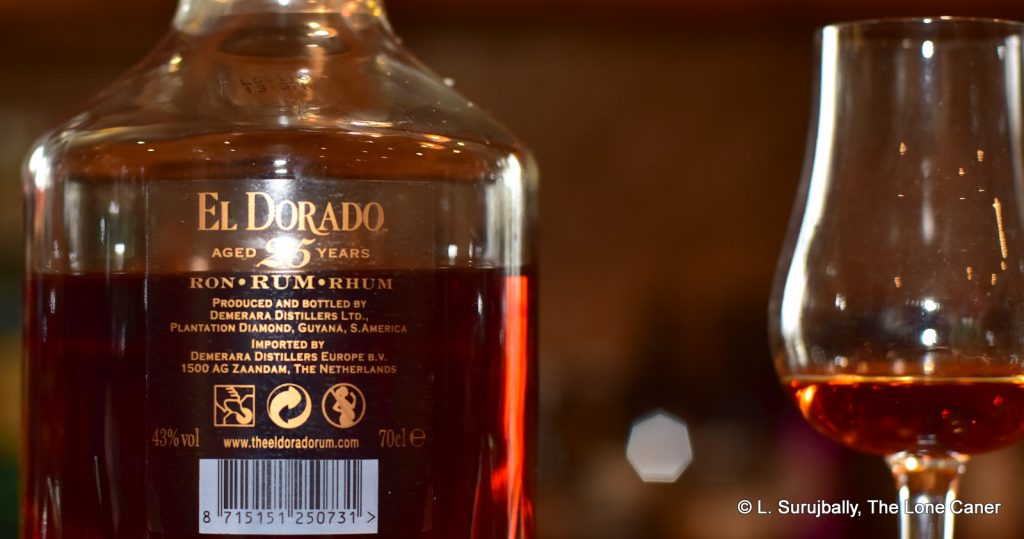
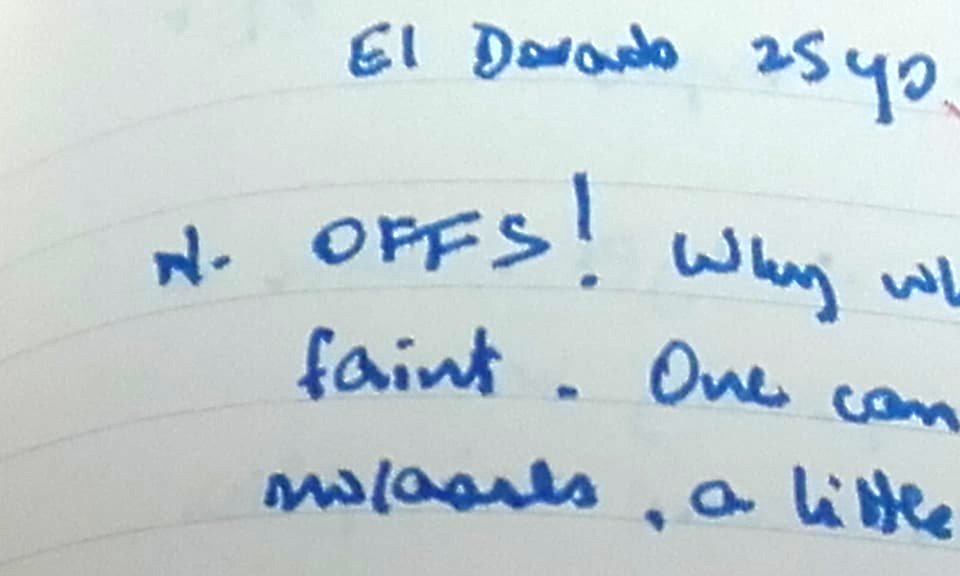
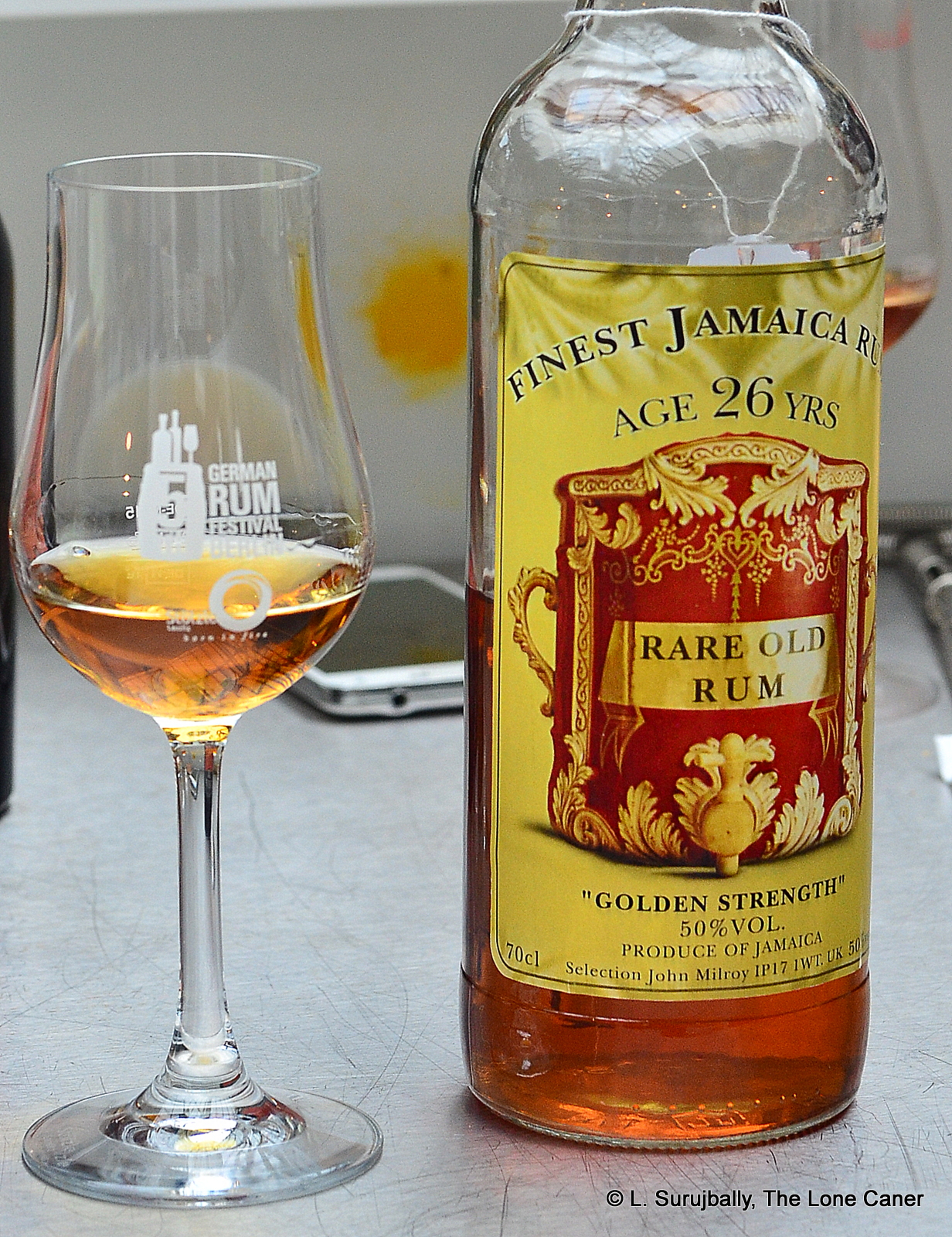 Rumaniacs Review #080 | 0516
Rumaniacs Review #080 | 0516
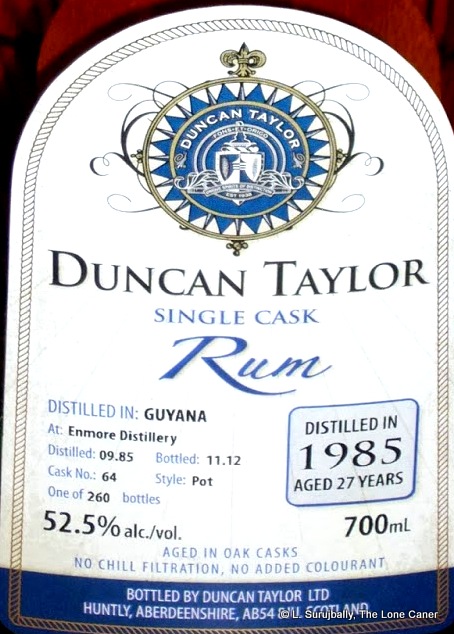 Thinness of the nose aside, the palate took something of a ninety degree left turn. It felt thicker, richer, with the glue and furniture polish notes receding, yet what emerged was a rum that seemed over-oaked, and very dry, very crisp. What fruits there were – and there were some, mostly raisins, pears, unripe apples and green mangoes – were of the mouth puckering kind, quite tart, accompanied by orange peel, nutmeg, cardboard or drywall, and something that reminded me of the dustiness of a drought-stricken backyard. The strength was fine for what it was – not low enough to make it a mild crowd-pleaser, not so strong as to make it an assault on the tongue, so on that level it succeeded just fine. The finish gave up more of those tart fruity sensations, oak notes, some pepper and cooking herbs (thyme and parsley)…yet overall, it somehow failed to cohere really well, and the whole experience was deflated by its relative lack of voluptuousness that either some more ageing or some time in tropical climes might have ameliorated.
Thinness of the nose aside, the palate took something of a ninety degree left turn. It felt thicker, richer, with the glue and furniture polish notes receding, yet what emerged was a rum that seemed over-oaked, and very dry, very crisp. What fruits there were – and there were some, mostly raisins, pears, unripe apples and green mangoes – were of the mouth puckering kind, quite tart, accompanied by orange peel, nutmeg, cardboard or drywall, and something that reminded me of the dustiness of a drought-stricken backyard. The strength was fine for what it was – not low enough to make it a mild crowd-pleaser, not so strong as to make it an assault on the tongue, so on that level it succeeded just fine. The finish gave up more of those tart fruity sensations, oak notes, some pepper and cooking herbs (thyme and parsley)…yet overall, it somehow failed to cohere really well, and the whole experience was deflated by its relative lack of voluptuousness that either some more ageing or some time in tropical climes might have ameliorated.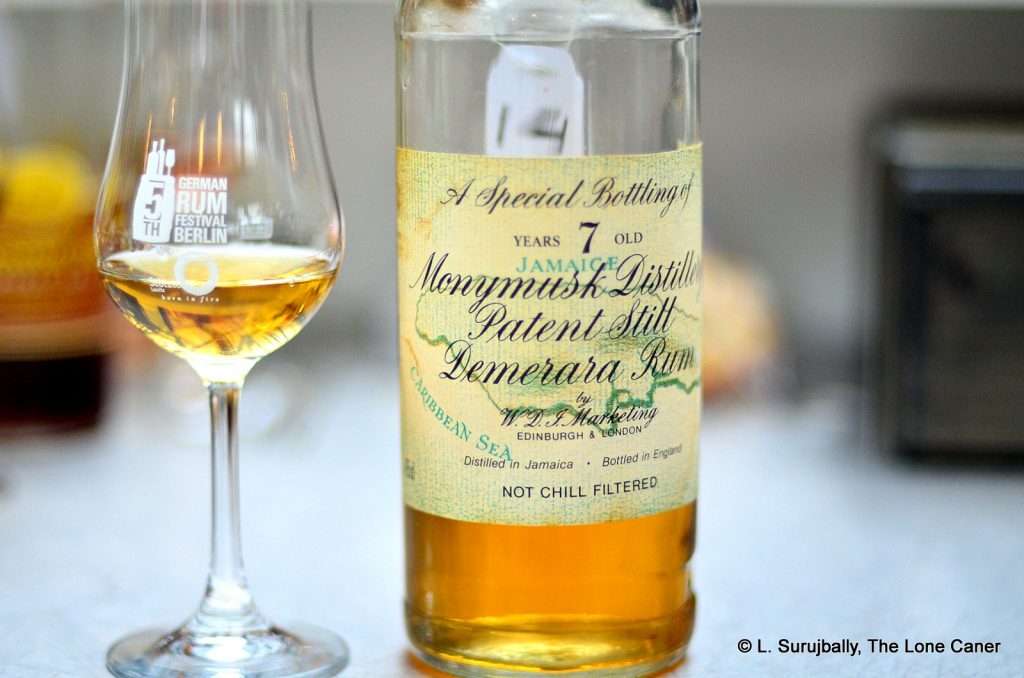
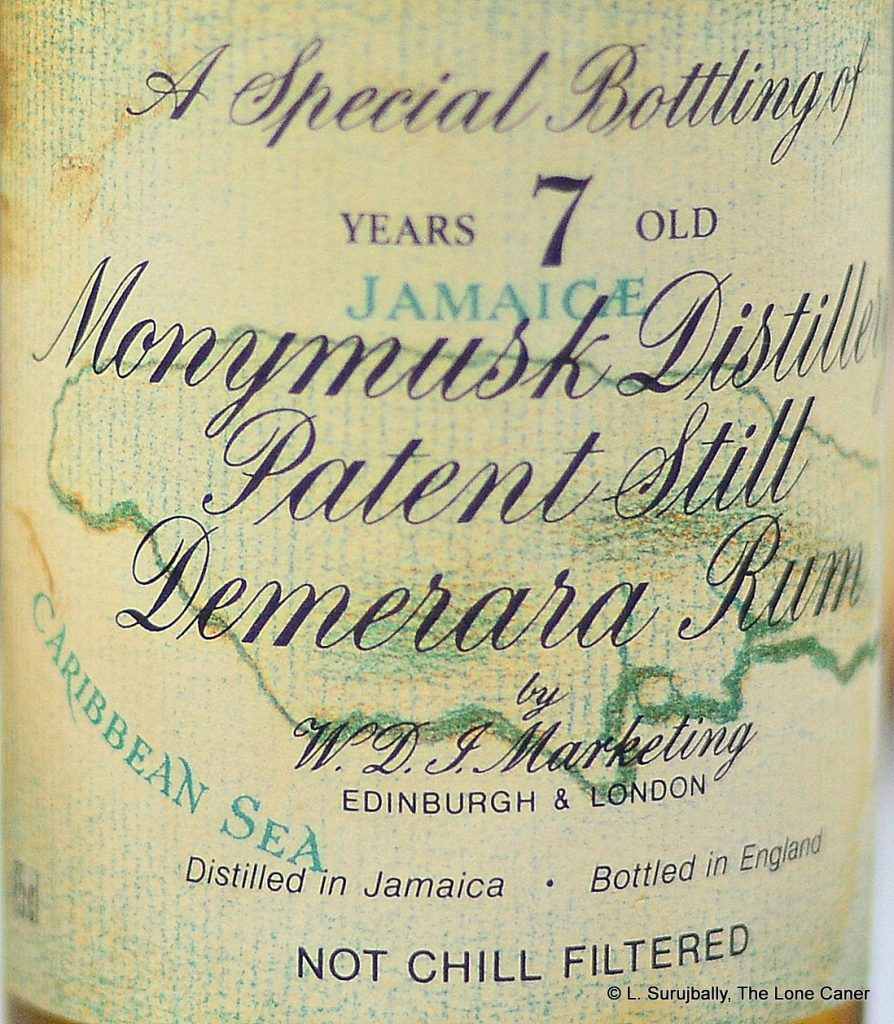 Nose – Yeah, no way this is from Mudland. The funk is all-encompassing. Overripe fruit, citrus, rotten oranges, some faint rubber, bananas that are blackened with age and ready to be thrown out. That’s what seven years gets you. Still, it’s not bad. Leave it and come back, and you’ll find additional scents of berries, pistachio ice cream and a faint hint of flowers.
Nose – Yeah, no way this is from Mudland. The funk is all-encompassing. Overripe fruit, citrus, rotten oranges, some faint rubber, bananas that are blackened with age and ready to be thrown out. That’s what seven years gets you. Still, it’s not bad. Leave it and come back, and you’ll find additional scents of berries, pistachio ice cream and a faint hint of flowers.